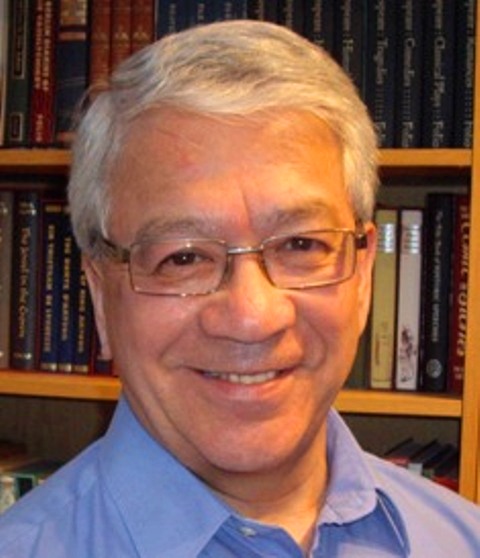By Phillip Khan-Panni, Toastmasters International
Have you noticed that the question asked most frequently in business is also the question that is most widely misunderstood? Because it is misunderstood, most individuals and most businesses respond with the wrong answer. That question is, “What do you do?” Most people interpret this as meaning, “Tell me what you do for a living.” In fact, it means, “Tell me why I should find you interesting.”
It is equally important in a social context, and for the same reason. We all need to know what makes us interesting; it is our Added Value. If you don’t know your own Added Value, you will probably say the wrong things about yourself.
A very high proportion of business presentations fail because they tell the wrong story. They talk about what they do, not about the benefit they offer. Similarly, most Elevator Speeches fail for the same reason.
So, let’s see how some people get it wrong, and you can decide if that applies to you as well.
Second class? Really?
Recently I was asked to review the CV of a young man in his mid 20s. As it stands, the CV will fail. It follows an old-fashioned format, opening with his education – second class honours, averaging 67 % across all courses. Then his A levels and GCSEs.
Whatever the intention the term “second class” is a definite turn-off. He’s telling the world he’s an average guy, fresh out of uni, second class, 67%. Unexceptional. Why look any further? In the bin.
In reality, this is who he is:
Young achiever with a 2:1 in Economics and Political Science and a track record of excellence in a range of sports. Numerate Market Researcher and proactive networker with conversational Spanish and an eclectic mix of work experience, including insurance, marketing and dealing with the public.
Personal attributes include advanced communication and social skills, admirable work ethic and exceptional integrity. That’s who he is. He’s been saying all the wrong things about himself.
Margaret’s Added Value
Margaret is someone else who needed help to get a new job. She was quite senior in industry and was badly shaken by being made redundant. All her job applications were being rejected.
We met on Skype and I set up a mock interview. I said, “Tell me about yourself” and she ran through her job history. I stopped her, saying, “Wrong story. They don’t care where you’ve been. They prefer to hear where you can take them – how they will benefit from taking you on.”
I showed her the picture of two men holding up placards. One stated, “Hire me. These are my qualifications.” The other stated, “Down but not out.” I asked her which was the more interesting person. She picked the latter.
Based on her understanding of the point in that picture, I helped her to realise her own Added Value, telling her, “This is what you bring to the table. This is who you are, and this is what you tell them you are offering.” I re-wrote her CV and coached her in handling an interview. She sent the CV to six companies, got five interviews and four job offers. All because she told the *right* story and believed in her own Added Value.
It’s not enough to tell an attractive story. You need to believe what it says about you.
John Sim the artist
25 years ago, I went to St Ives, where I met a brilliant artist called John Sim. He was painting an underwater scene depicting a sunken man-o’-war with a couple of divers exploring the wreck. He called it The Final Resting Place. Someone had upset him by saying no man-o’-war had ever sunk complete, as he was showing it. But he did some research and discovered that The Royal George had done just that.
I quoted, “Toll for the brave, the brave that are no more, all sunk beneath the wave, fast by their native shore.” Startled, he said, “What’s that?” I told him it was a poem called “On the loss of the Royal George.”
I picked up his leaflet promoting the new painting and said, “The Final Resting Place” is simply about a ship that sank. It’s a literal description. You are saying you have no imagination. The Royal George is about the valiant men who went down with their ship. It’s a better story.” So, I redesigned his leaflet with the headline, “Toll for the brave, the brave that are no more.” A much more evocative story.
Last August in St Ives we invited John Sim for dinner. He thanked me for my help and said I had helped him sell many copies of the painting. And then he paid for dinner!
The exceptional Hilary Mayes
Also in St Ives we met an artist called Hilary Mayes. She asked me to help her with her leaflet. It stated: Hilary Mayes, Wildlife artist. I said no, that’s the wrong story. You are saying you are just another artist who paints wildlife. But you are better than most others.
I added one word to the front, the word “The”. To read: Hilary Mayes, The Wildlife Artist. What a difference that one word made! On the inside I added one sentence, “She captures the essence of the wildlife she portrays.”
What had I done? I positioned her as distinctive and better than all the other artists who paint animals and birds. She had been saying the wrong things about herself. I gave her the right story.
How to talk about yourself
How do you talk about yourself? Do you tend to be linear and formulaic? Does what you say come across as just plain ordinary? And is that who you really are? Are you defining yourself by what you do or by your Added Value?
Here are some tips to present yourself well:
- Identify what would induce people to deal with you and not with others
- What is your Added Value?
- What can you call yourself “The” something or other?
- Don’t be linear (this, then that, then the next thing)
- Avoid using negative terms about yourself
- Above all, don’t define yourself by your job title. What’s the benefit of what you do?
In essence you are unearthing what makes you distinctive, and how you add value to the team or group you are in. By including something evocative you’ll enhance your personal story. Finding what will allow you to call yourself “The” something or other will provide distinction. So go ahead and tell your new story.
ABOUT THE AUTHOR
 Phillip Khan-Panni is a member of Toastmasters International, a not-for-profit organisation that has provided communication and leadership skills since 1924 through a worldwide network of clubs. There are more than 400 clubs and 10,000 members in the UK and Ireland. Members follow a structured educational programme to gain skills and confidence in public and impromptu speaking, chairing meetings and time management. To find your nearest club, visit www.toastmasters.org
Phillip Khan-Panni is a member of Toastmasters International, a not-for-profit organisation that has provided communication and leadership skills since 1924 through a worldwide network of clubs. There are more than 400 clubs and 10,000 members in the UK and Ireland. Members follow a structured educational programme to gain skills and confidence in public and impromptu speaking, chairing meetings and time management. To find your nearest club, visit www.toastmasters.org
